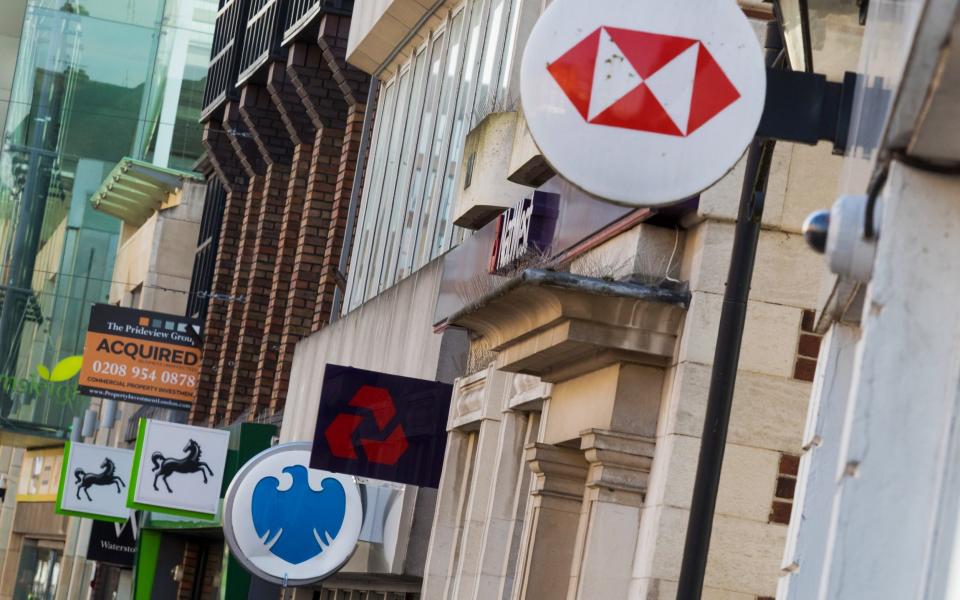Why sticking with a high street bank cost you hundreds last year

Savers who stuck with the big banks last year would have lost out on £318 in interest on their money, analysis has shown.
Through the savings boom of 2023, which saw one-year fixes rocket to more than 6pc, rates offered by high street banks trailed behind those advertised by smaller challenger banks.
A Telegraph Money analysis found that on the first working day of every month of 2023, the rates offered by the big banks on one-year fixes for pots of more than £5,000 were eclipsed by smaller lenders.
For those with pots of £60,000, putting £5,000 into a one-year fix on the first day of every month, following the top rates rather than sticking with the big names, would have seen them earn more.
Saving £5,000 each month into the top one-year fixed rate available would have netted a saver £3,270 in interest.
But if that monthly £5,000 had been left with any of the big banks, it would have generated only £2,946 in interest, once all the fixes had paid out.
With rounding, a saver would be 11pc better off chasing the top rates.
The analysis excludes cash Isas, such as Santander’s 5.6pc offer which it launched on September 18, because savers can currently open only one cash Isa each tax year.
It considered rates offered by Lloyds, RBS, HSBC, Barclays, Santander, Nationwide, Natwest, TSB and Metro as those offered by the “big banks”.
The biggest gap was in June, when Natwest’s one-year offering stood at 4.2pc, as opposed to Tandem’s 5.15pc, according to data provided by financial analysts Moneyfacts.
The nearly one percentage point difference would equate to almost £500 over the course of the one-year bond on savings of £50,000.
The best rate offered all year on a one-year fix was from National Savings & Investments (NS&I), which launched a 6.2pc rate in August, before pulling it just six weeks later after 225,000 signed up.
Sarah Coles, of stockbroker Hargreaves Lansdown said that the impact of lower rates on offer was exacerbated by savers not realising they could earn more interest elsewhere.
She explained: “The difference between the best on the market and the best from the big banks is bad enough, but when you look at how people actually use these accounts, it’s even worse.”
Ms Coles said that the high street banks don’t work hard to attract savings because for many consumers they are the default option.
She added: “As rates start to ease. It means it’s even more vital to shop around and make sure you’re getting a good deal.”

The Financial Conduct Authority (FCA) warned the big high-street banks in July last year that they needed to get their act together and pass on rate hikes to savers.
The Chancellor Jeremy Hunt also waded into the row, telling the banks last June that they were taking “too long” to increase their rates.
The Bank Rate hit 5.25pc in August 2023, after 14 consecutive rises from December 2021, and has been held there ever since.
A HSBC spokesman said it continued to support customers and offer “overall value” on savings accounts.
The spokesman said: “We have designed our savings accounts to make it easy to build and maintain a savings habit, and we know that rates are important to customers alongside flexibility, convenience and confidence of saving with a trusted high street brand.”
A Santander spokesman said: “We delivered strong value for our savings customers last year, which included competitive savings rates for our ISAs and easy access products.”
An FCA spokesman said: “We continue to look closely at the value firms provide to savings customers. We have seen a more competitive market emerging, with the rates available improving significantly.”
“We asked 9 firms to provide us with their fair value assessments for their lowest paying easy access savings accounts.
“Our review of these raised important questions about how firms assess value. We are working closely with firms to ensure their assessments are fit for purpose and we will issue a further update in due course.”
Recommended
The savings boom is over – here’s where to lock your money away now

 Yahoo Finance
Yahoo Finance